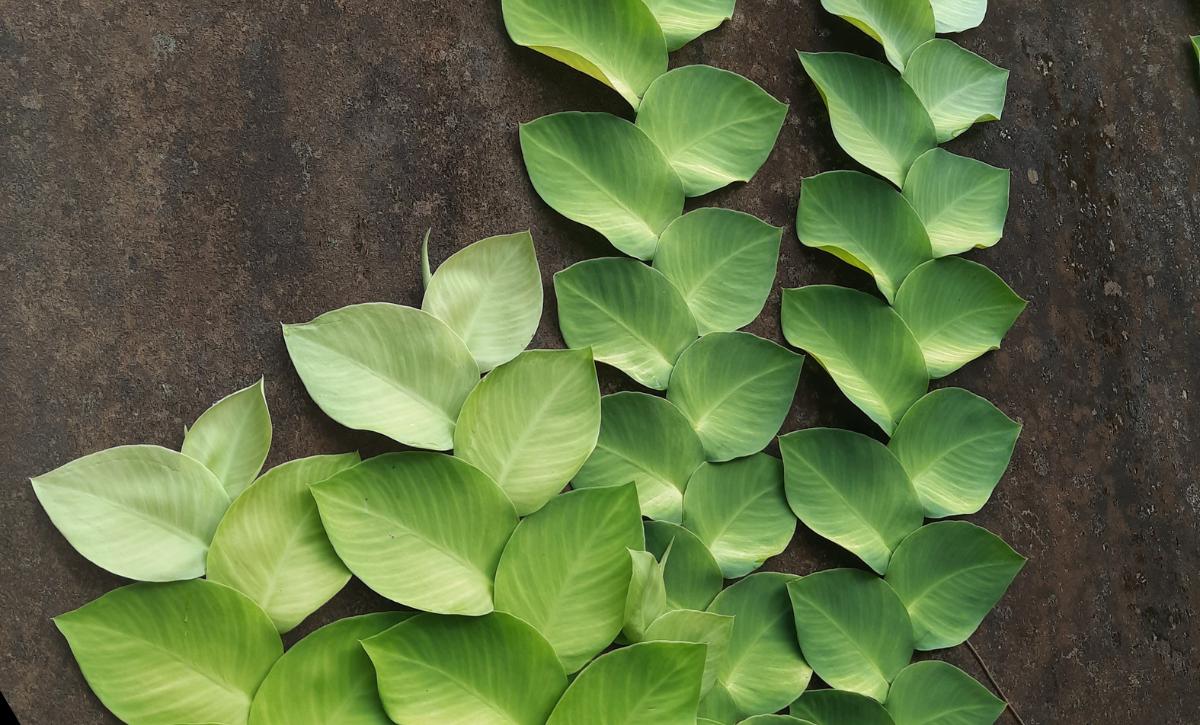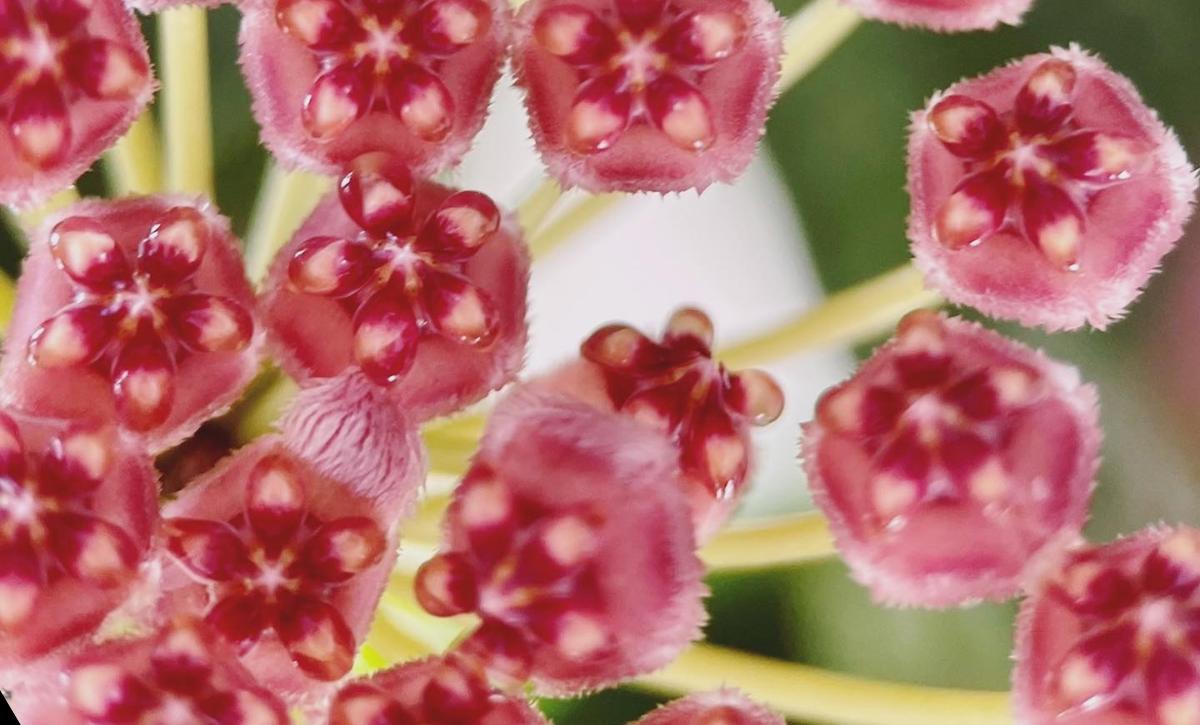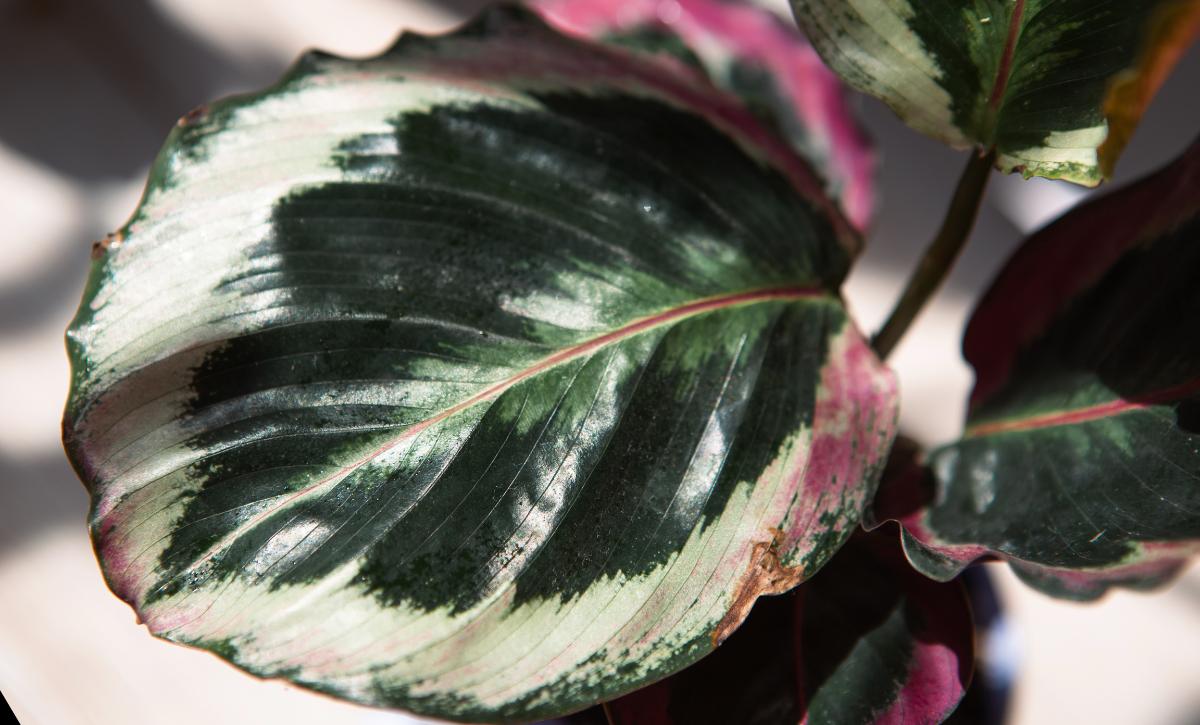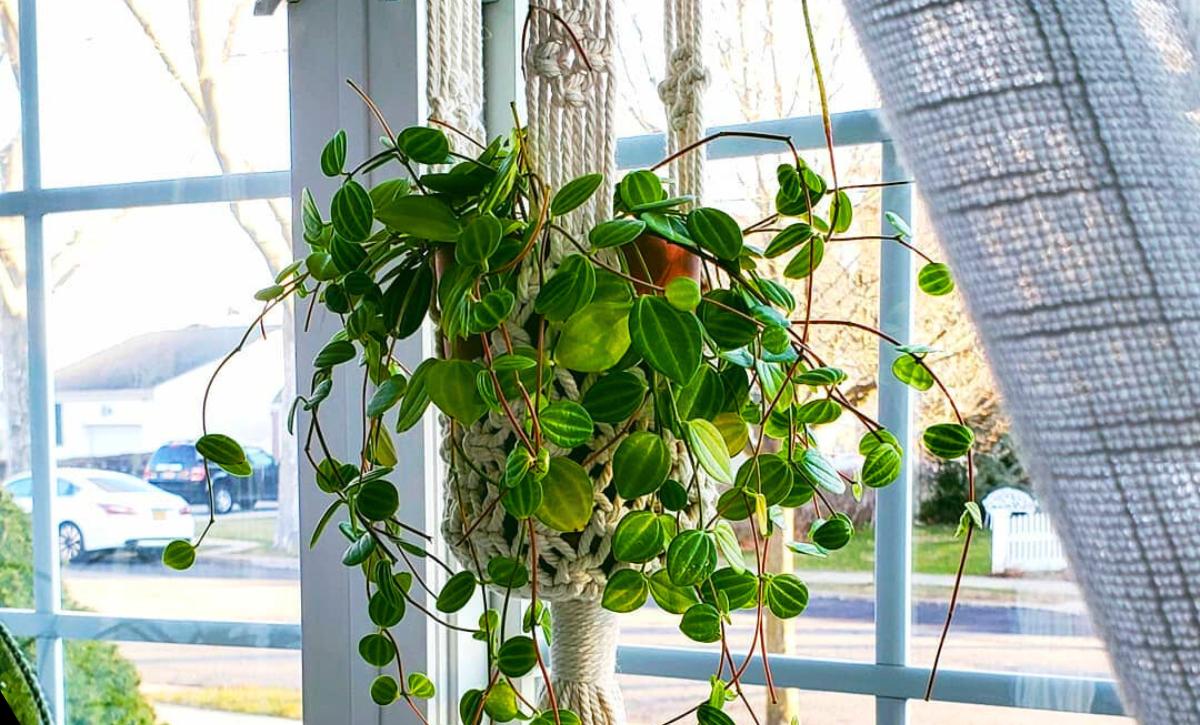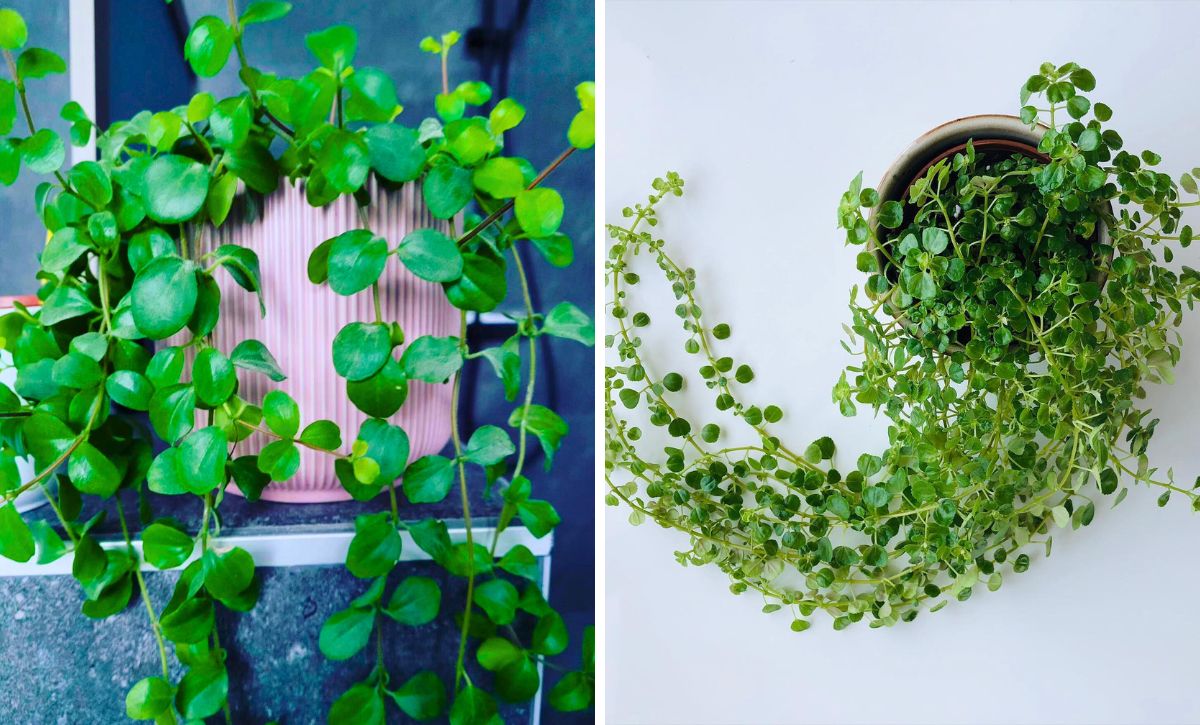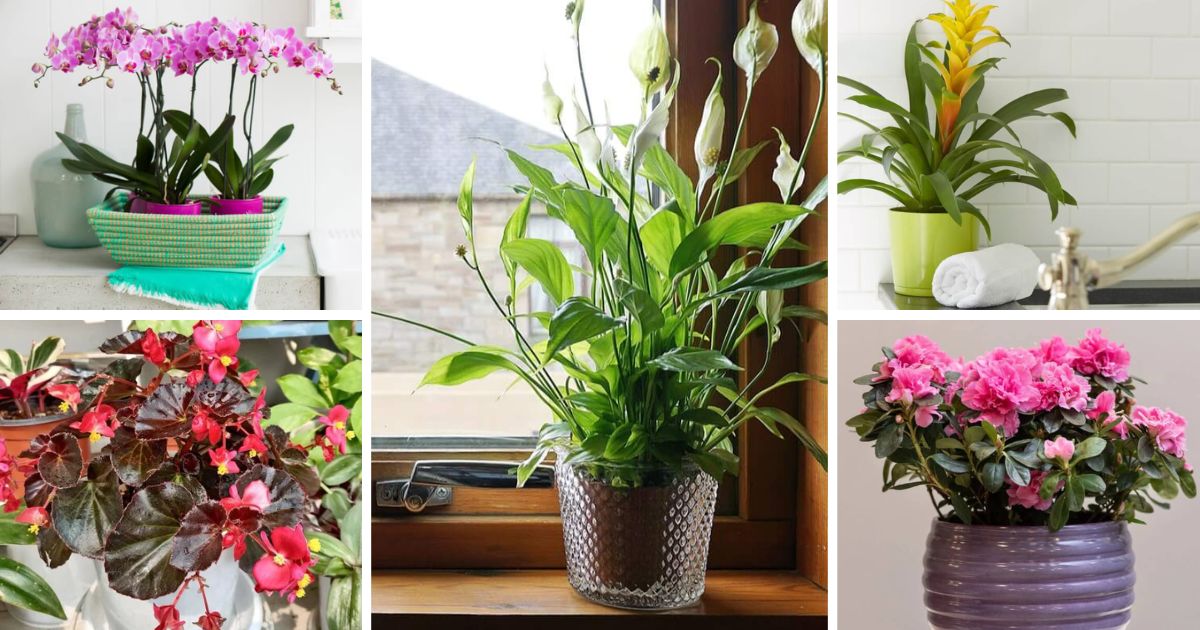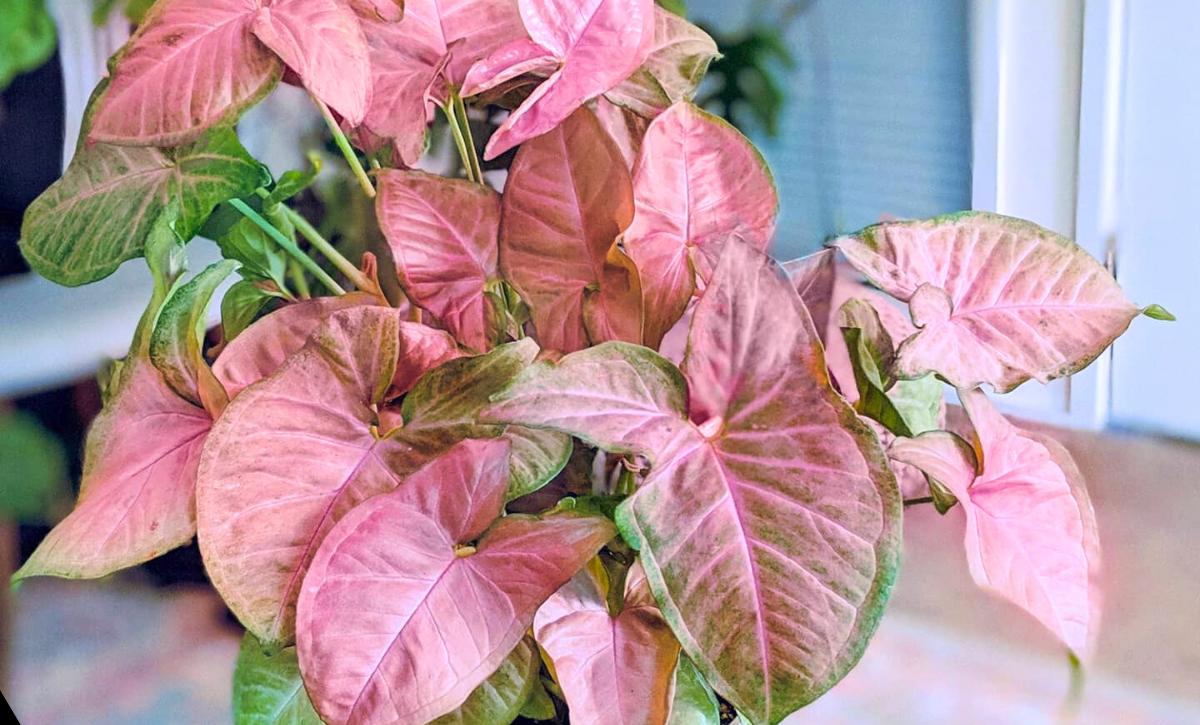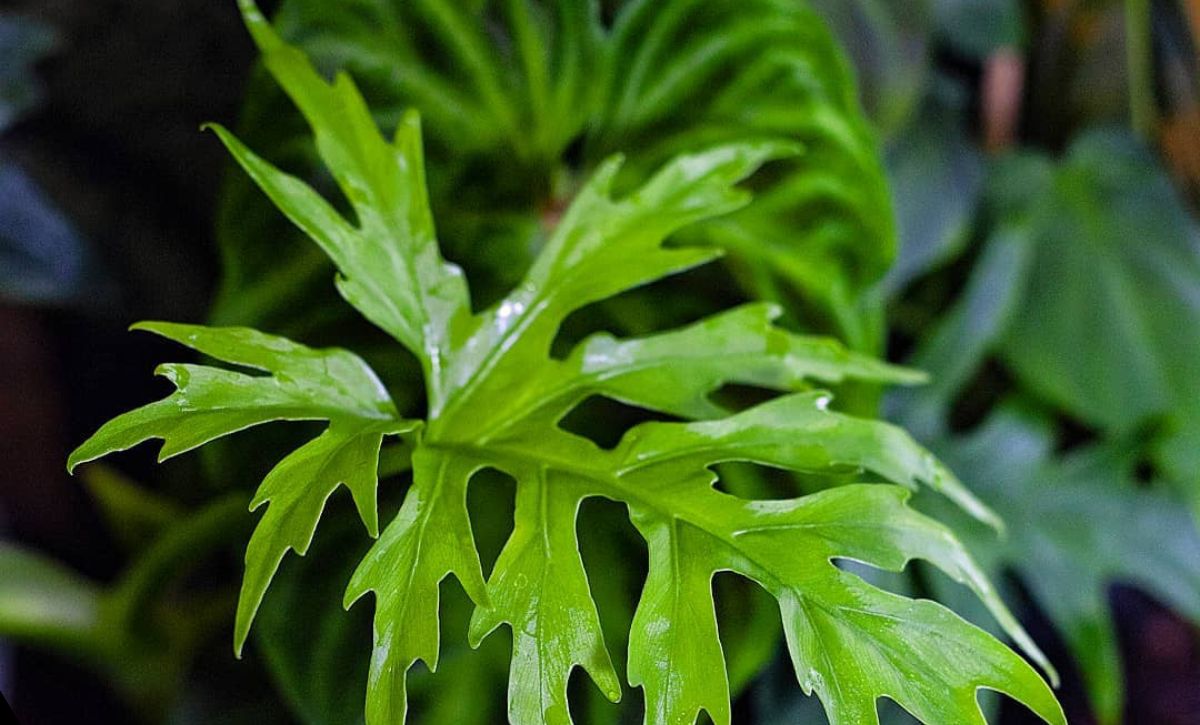If one plant stands out from other garden and indoor plants, it’s Begonia maculata or the polka dot begonia.
With its angel wings-shaped leaves with silver dots and red undersides, the begonia maculata tops the list of the most stylish plant leaves.
The uniqueness of this plant has many people wondering if it’s possible to propagate. Luckily, propagation of the Begonia maculata is possible, and you are about to learn how.
Let’s take a look at how you can propagate this plant!
When To Propagate Begonia Maculata
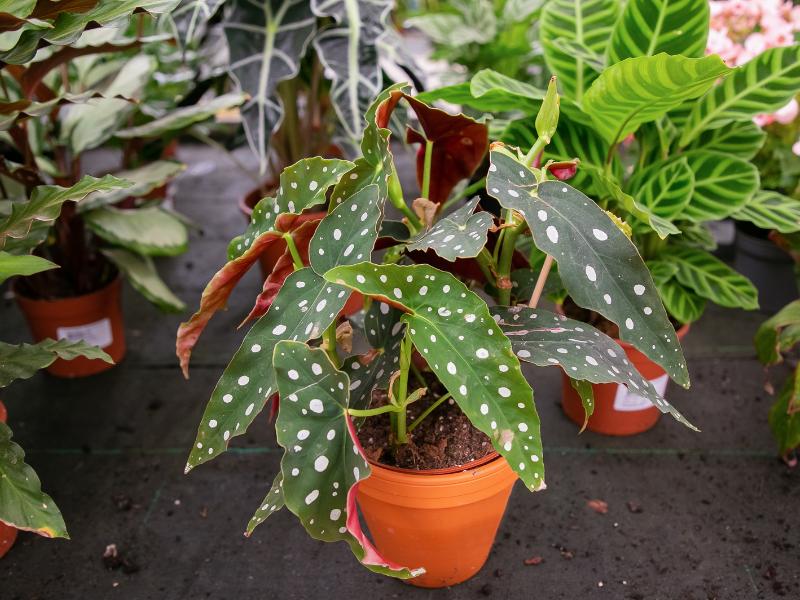
It’s not enough to know how to propagate this beautiful plant; it’s also important to understand the right propagation time.
Before beginning the propagation procedures, you should know when it’s the right time to start and what to expect.
There are four propagation methods for begonia maculata wightii: stem cuttings, leaf cuttings, division, and from seeds.
If you choose the seed propagation method, ensure the seeds are sown in early spring.
Propagation by other methods, such as leaf and stem cuttings, can be done at any time, but to increase the chances of success, the best time to propagate is during the early spring or summer.
This plant is also likely to wither and die when exposed to harsh weather when the first frost arrives. To prevent this, ensure you imitate the tropical environment indoors where the plant is placed.
How To Propagate Begonia Maculata
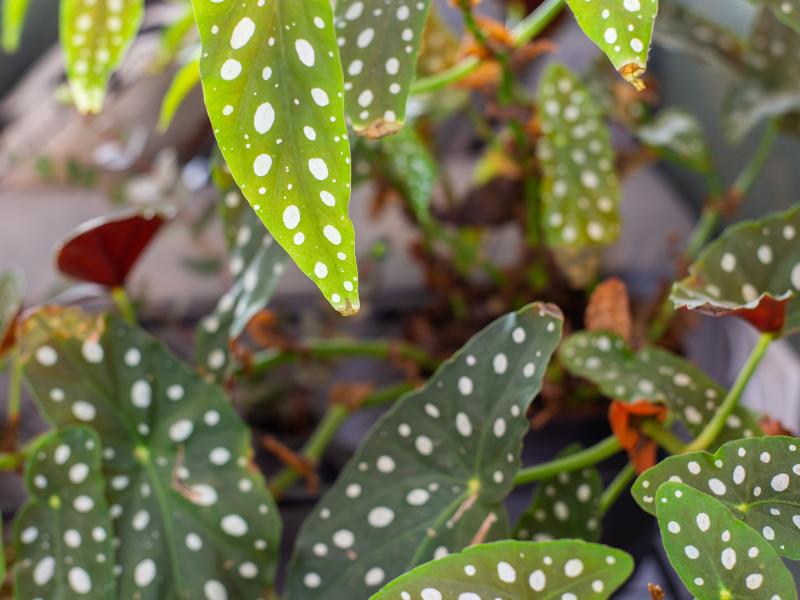
Propagating this plant through either of the four methods is easy and with a high success rate, which is good news for growers.
Here is the process of growing new polka dots begonia plants. Be sure to take every step!
By Leaf Cuttings
There are seven steps in propagating this plant by leaf cuttings.
- Look for a few fresh leaves from your begonia maculata and cut them off.
- If you want to propagate several new polka dot begonias, turn the leaves upside down and divide them using a sharp, sterilized knife or scissors. Sterilization can be done with 70% isopropyl alcohol or bleach. Ensure whichever tool you choose is sterilized.
If you plan to propagate only a few of these plants, you do not need to divide the leaves. You simply have to cut the leaves from the mother plant and ensure that each leaf you choose for propagation has a petiole.
- Now the next step is to make a nursery for the cuttings. In a small pot, add some well-draining potting mix. This mix can consist of vermiculite, perlite, or peat moss.
- Next, insert the leaf cutting petiole stalks into the soil. To accelerate the rooting process, wrap the nursery pot with a transparent plastic bag and place it where it can receive bright indirect light. Ensure the pot is not exposed to direct sunlight, which may cause propagation failure.
- Ensure the soil in the nursery is always moist but don’t overwater it, as this could cause root rot.
- Root formation will begin after three to five weeks, and you’ll have your new begonia maculata.
- Wait for about six weeks after the roots have sprouted, and your begonia maculata will be ready for transplanting.
Propagation by Stem Cuttings
This plant can also be propagated by stem cuttings. Before beginning the propagation process, it’s important to know how to make stem cuttings. Propagation can be done either by water or soil.
Use a pair of clean, sterilized scissors to make a cutting from the plant. If you have been trimming the plant, use one of the cuttings you chopped off. Ensure the cutting you make has at least one node attached; the more nodes, the better. The cutting should also have at least one leaf.
You should cut right below the node in most indoor plants, but this isn’t the case for the begonia polka dot plant. New roots are likely to cluster on the nodes. In other cases, they’ll grow all over the stem.
Next, it’s time to decide which propagation method you’ll use: soil or water.
Propagating in Soil.
Here is how to do it:
- Fill a container with a suitable potting mix (may include peat moss, perlite, or vermiculite).
- Cut some healthy stems from the begonia polka dot plant and divide them into the number of plants you want to propagate. Each cutting should have a node.
- Spray some water on the potting mix to moisten it.
- Now plant the cutting in the soil and place the nursery pot in a warm place with plenty of indirect sunlight. It’ll take a couple of weeks for the roots to develop. Ensure the soil is moist at this time and not wet. If you are unsure about the indirect light, you can grow the plant indoors with grow lights.
- To ensure the right humidity levels, use a humidifier or cover the nursery with a plastic bag. If you decide to cover it, remove the cover twice a week to allow air circulation.
- After a couple of weeks, check the cuttings to see if there is a new root formation. Do this by gently tugging on the stems. Resistance will indicate there has been a formation of roots.
- Once the roots have developed, continue with normal care until it’s time to transplant the new plants.
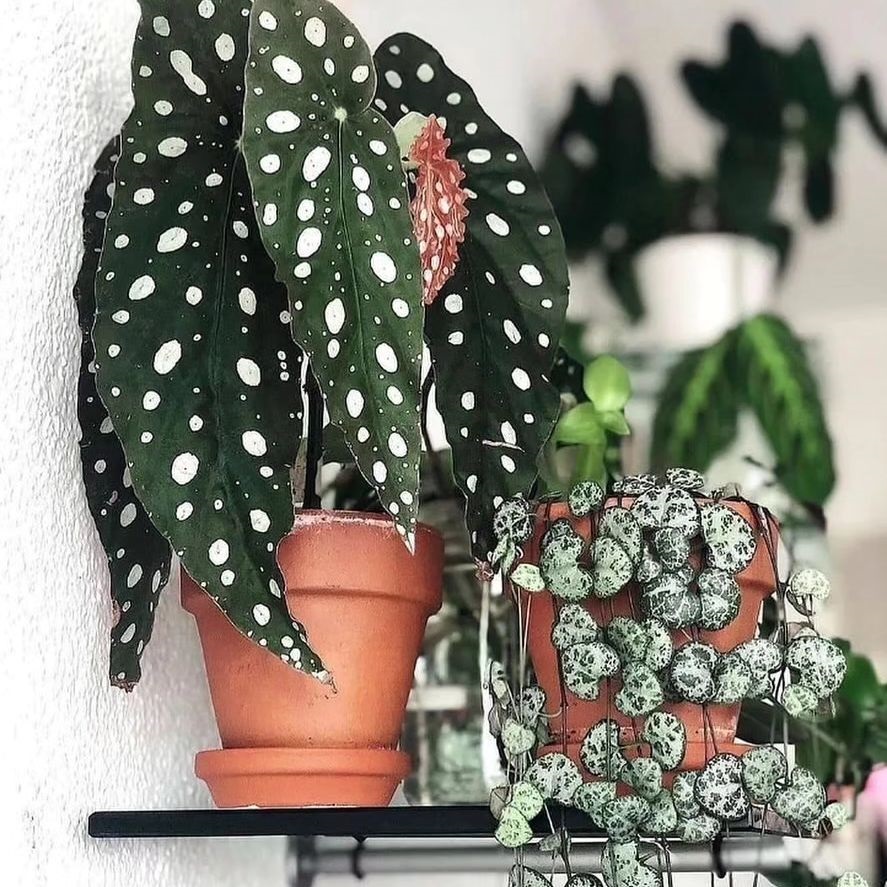
Propagating in Water
Get a large enough container and fill it halfway with water. Now lay the cuttings in until the bottom third of the cuttings are covered by water.
Submerging more of the cutting in water will increase the risk of the cuttings rotting. It’s also important to ensure the leaves are not in contact with the water, increasing the risk of rotting.
A clear container is the best option when propagating by water as it enables you to clearly see the cuttings’ progress.
Place the container in a bright shady area with indirect sunlight. Direct sunlight will cause damage to the cuttings, and this may prevent proper propagation. You can use a light monitor to determine whether the cuttings receive sufficient sunlight.
Grow lights can also be used to improve the growth rate. Another way to encourage root formation is by using a rooting hormone.
Another important step when propagating the cuttings by water is refreshing the water after every two or three days. Standing water is toxic to the cuttings, and refreshing removes harmful bacteria and prevents it from standing. Letting the water stay for too long will cause it to have a bad odor which is a bad sign.
The begonia maculata wightii roots easily, so it shouldn’t take long before you start noticing new roots on the cuttings.
You should note that root formation will depend on many factors, so some cuttings may grow faster than others. However, compared to other indoor plants that take months to root, the polka dot begonia has a faster root formation rate.
Propagation using Polka Dot Begonia Seeds
While growing this plant from the seeds is possible, it can be tiring and time-consuming.
It’s also important to note that the resulting plants from seed propagation may not be the exact replicas of the plant if the parent plants were hybrids.
This is because the hybrids of these plants are from several plant varieties. In some cases, seeds may even fail to germinate if the hybrid is sterile.
During seed collection, clip the branches or stems that are done blooming. Cutting stems with no blooms may be futile since they don’t have seeds. Once the flowers dry, you can save some begonia maculata seeds.
By Division
Propagating by division is easy. Here are the steps you should follow.
- Remove the plant from the container or the pot it’s growing. Do this by slowly wriggling the plant out of the container so you don’t tear the delicate leaves.
- To propagate the plant by division method, you first need to separate the offshoots or stems. Separating the begonia polka dot stems from each other is easy compared to other plants.
- Now pull the different parts of the begonia polka dot apart. It can sometimes be challenging, and you may need to untangle the odd roots. Use specialized tools like shears to untangle or separate the plant, as tugging them apart can easily destroy it.
- Next, examine the roots of the plant. Suppose you notice some discolored or mushy roots on the separated plants. In that case, you may have to discard these and separate them from healthy plants, as the condition could be contagious.
- Return the mother plant back to its original container.
- Place the divided or the now new baby begonia maculata on new pots. Ensure you don’t reuse old pots of the plant or other plants, as this could be contagious and cause damage to the new plants.
- Use the normal care guide for the begonia polka dot plant.
Reasons To Propagate Begonia Maculata
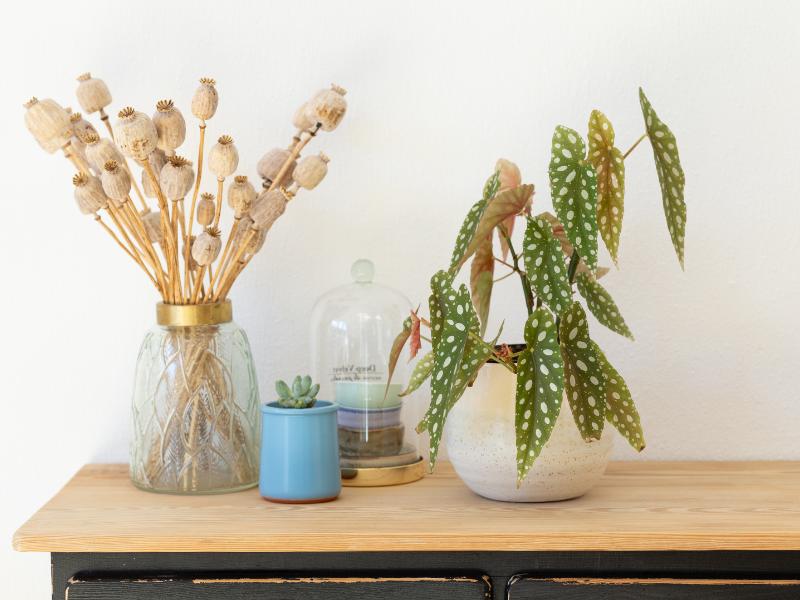
People wonder why propagation is important or what they’ll gain from it.
The truth is most houseplants can be really expensive, especially unique ones like the begonia polka dot. With this in mind, it’s more economical to propagate the plant if you already have one, and who knows, maybe you may make some money from it too!
Propagating houseplants is cheap, fun, and exciting to get new plants.
Additionally, propagation can also save your plants. Suppose your plants have started dying due to factors such as underwatering or overwatering, mistreatment, or overfertilization, then extracting the healthy stems and propagating them as new plants may be an effective way to save the plants.
Under the right conditions, the plant will quickly grow in the new pot. You should trim the plant occasionally to control its growth. Propagating the stems you trim will prevent the plant from going to waste.
Common Mistakes When Propagating
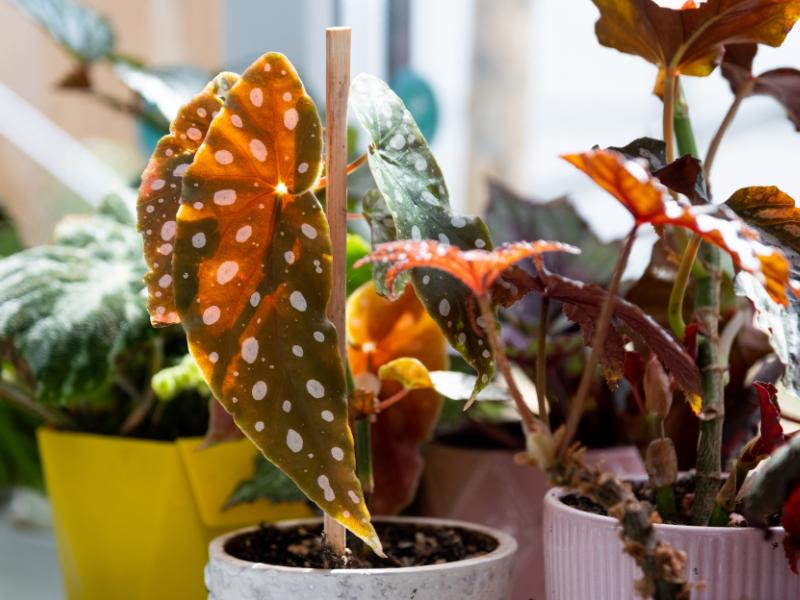
Man is to err, and we all make mistakes occasionally, especially if you are an avid gardener or even beginners for that case.
Finding out that the propagation did not go as planned can be disheartening, but we have prepared a list of common mistakes to avoid for the multiplication to be successful.
Placing the Cuttings in Water for too Long
With the knowledge of the propagation of this plant through stem cuttings in water, it’s also important to understand what mistakes to avoid when using this method.
As mentioned earlier, changing the water frequently is important to minimize the risk of bacteria formation and the cuts rotting.
The good thing is if the cuttings start to rot, you’ll notice this in just a few days. This will be exhibited by soft and mushy cuttings. Once you notice this, select cuttings with a healthy node since they can recover and discard the rest.
Direct Light
Another crucial factor to remember is avoiding direct light. Cuttings should always be placed where they can get plenty of indirect sunlight. When exposed to direct light, the leaves will turn yellow, even when it is just for a short period.
The trick is to ensure the nursery is not exposed to direct or low light. To get indirect light, you can shade a place with direct light with translucent material.
Patience
Any seasoned gardener knows that patience is key when growing plants. Even though the begonia maculata will form roots in about a week, remember that even if the roots fail to form within this period, it’s not a cause for alarm.
Root formation may get delayed, but just to be sure, check if the nursery and cuttings are under optimal conditions.
If you check out all the factors like light, potting mix, water/moisture, humidity, and temperature, add a little patience to it. It will be worth it!
Begonia Maculata Care Guide
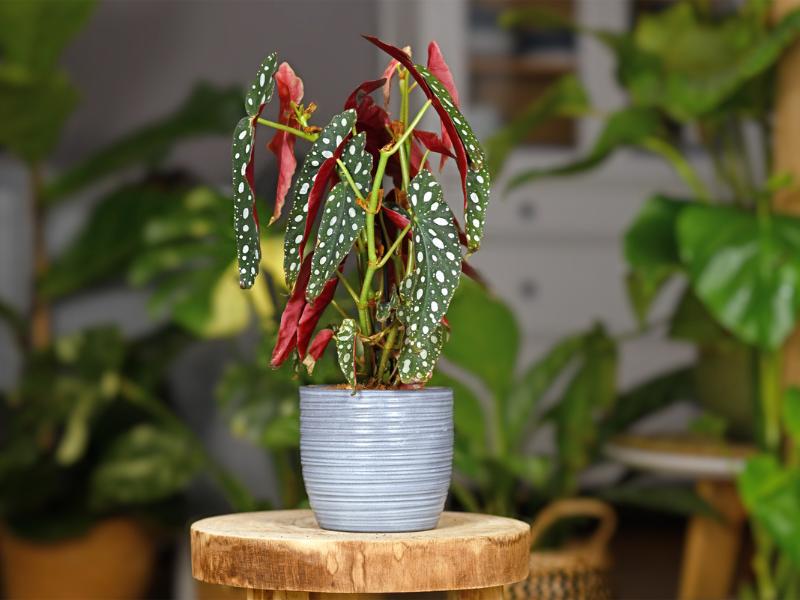
Just as they are easy to grow, polka dot begonias are easy to care for. Don’t get me wrong. These plants shouldn’t be completely ignored, but caring for them is a walk in the park compared to other plants.
Here are some important care tips!
Light Requirements
Many philodendrons will thrive in partially shaded areas or indirect light.
The begonia maculata prefers a little more shade than other tropical plants. If you want to see this plant thrive, place it in a place with filtered light.
There are two tools you can use to ensure your plant gets the best light. Use a light meter to monitor the light the plant is receiving and a grow light to illuminate the plant.
When using a grow light, don’t place it too near the plant, as this could have adverse impacts.
In the summer, you can take the plant out but place it in a place with indirect sunlight.
If you notice any signs that the plant may be getting scorched or burned by the sunlight, move it to a less sunny area, or if you are using grow lights, move them further away.
Humidity Requirements
This plant is native to Brazil, which is one of the tropical areas. As such, this plant prefers humidity levels of at least 50%.
The best place to keep the plant to get these humidity levels is in a well-lit bathroom since the humidity is high in such wet rooms.
You can also place the plant in your favorite room and use a humidifier to adjust the humidity levels. Alternatively, you can place a saucer of water near the plant such that the water evaporates and creates humidity for the plant.
If you use a water tray, ensure the plant isn’t submerged. Roots may become damp when the plant is in contact with water, leading to fungal diseases.
Automated methods, such as using a humidifier, are an excellent and efficient way of ensuring your plants have the right humidity.
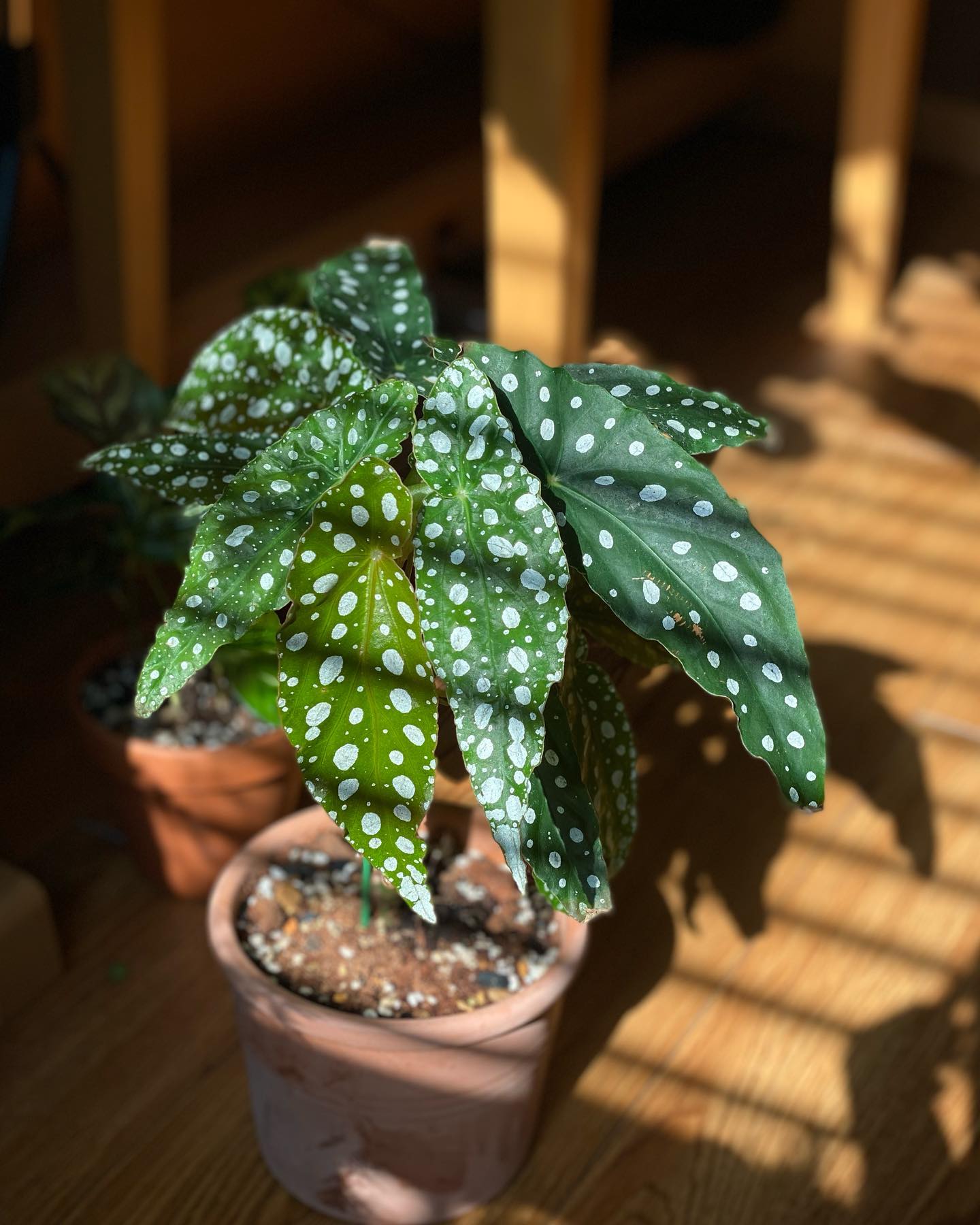
Temperature Requirements
The polka dot begonia will do well in areas with temperatures between 67 and 70℉.
As for people in cold climates, you may have to give up on this one as the plant won’t survive in cold areas; it’s a tropical plant.
Ensure the soil temperature doesn’t drop below 60℉, which may damage the plant.
Soil
The begonia will do well in well-draining soil, so it’s important to increase the aeration of compact soil by using sand or planting it in loamy soil.
This plant is susceptible to root rot, so add some pebbles or broken terracotta pots at the bottom before adding the substrate to encourage draining.
Watering
Underwatering and overwatering are two key issues that may adversely affect this plant, so balancing when watering is key.
Ensure the soil doesn’t completely dry out between waterings. Conversely, avoid overwatering the plant as it may cause root rot and permanent damage to the plant.
Check the soil for moisture before watering the plant. Simply place your finger in the soil and check the first few inches for moisture.
If you still can’t confirm the plant needs watering, wait until the leaves of the begonia maculata start wilting rather than watering it and risking overwatering.
You can apply top watering to the plant, but the leaves should always be kept dry
Fertilizing
Fertilizing schedule for this plant is pretty simple. You just have to fertilize it twice a month during the growing season (spring and summer). During the dormant seasons (fall and winter), fertilize it once every two months.
Use a balanced fertilizer such as triple 14 or triple 17 to ensure the plant gets all round nutrients.
The fertilizer should be diluted to half strength to avoid burning the roots and overfertilization.
Repotting
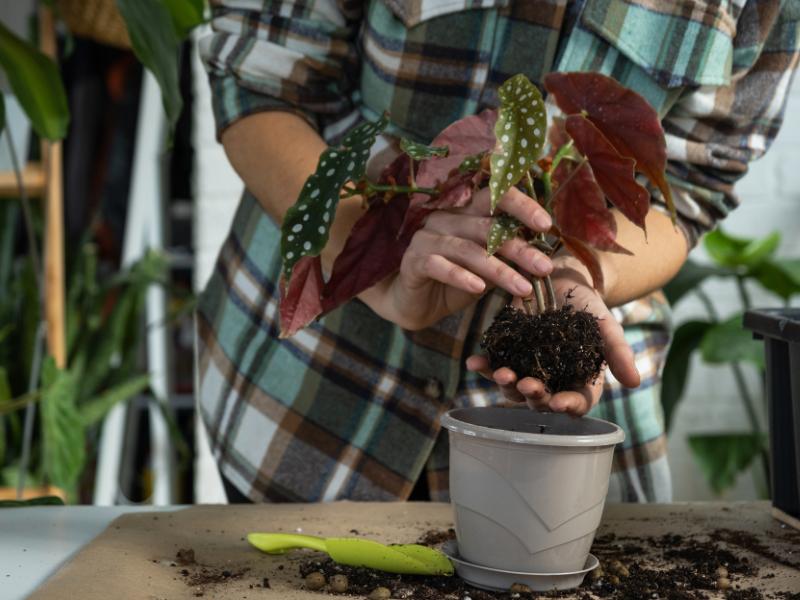
This polka dot begonia is a fast grower. This means the plant will need to be repotted often, at least once a year, during the first growth years.
Since the plant thrives when it’s root bound, using smaller pots is important.
If not repotted, the plant may have stunted growth. Therefore, always repot the plant to give it a chance to thrive.
Repotting should always be done at the beginning of the growing season. When repotting, ensure it’s done on a larger pot and with fresh soil to minimize the risk of contamination.
Pruning
For many growers, pruning isn’t a critical part of the plant’s care guide, but in my experience, it’s crucial in helping your plant thrive and grow healthy.
There are several reasons to prune. For one, as the plant grows tall, it may get leggy. Therefore, pruning could help revive it. Secondly, it’s important to remove diseased, dead, or discolored leaves that may be on the plant. This will also improve the plant’s health.
Here are three methods you can use to prune your begonia:
- Cut the plant down to its base to promote fresh new growth of the entire plant.
- Prune the branches to help the polka dot begonia maintain its shape.
- Remove only spent flowers and dead leaves from the plant.
Just like repotting, pruning should be done during the growing period as this will boost the plant’s growth.
Cleaning
While I previously mentioned that it’s best to apply top watering to the plant, this doesn’t mean the leaves should absolutely come to no contact with water. Cleaning the leaves is important.
Find a soft sponge and dip it in water, then use it to gently clean the leaves of the maculata. Alternatively, you can use a spray bottle filled with water.
After cleaning, use a soft cloth to dry out the excess water on the leaves, as letting it linger may cause the leaves to rot.
Common Issues With The Begonia Maculata
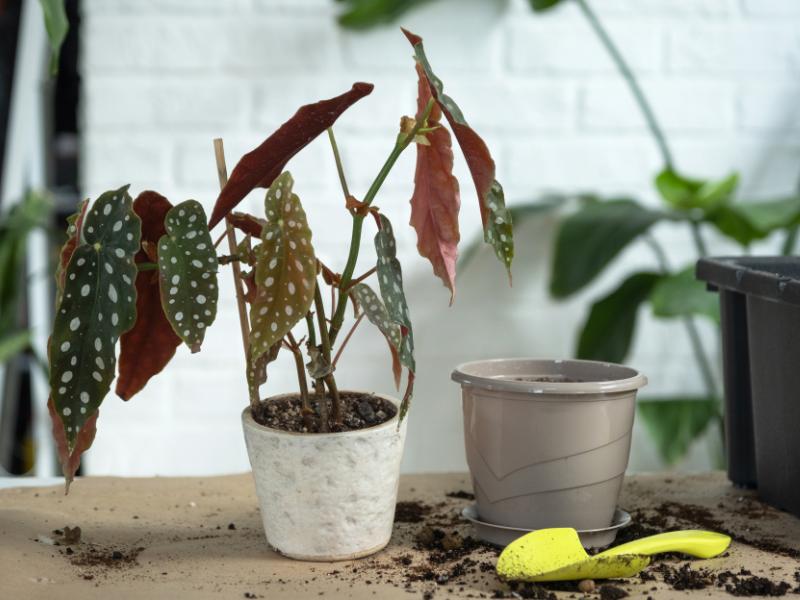
While this plant is pretty easy to grow, it’s not resistant to pests and diseases. Even though it’s not common, this plant can be attacked.
Here we have prepared solutions to some common issues with the plant.
Pests
Several pests, such as whiteflies and mealybugs, may attack the polka dot begonia. Fortunately, it’s quite easy to get rid of them.
To ensure these pests don’t take down your plant, you must inspect it regularly. Signs such as brown lesions could indicate whiteflies and mealybugs have attacked the plant. Use some dish soap and neem oil to remove the pests.
Powdery Mildew
The primary reason for powdery mildew in plants is wet leaves. If the condition is left untreated for too long, it could cause severe damage.
To minimize the risk of your plants getting powdery mildew, apply bottom watering and ensure leaves don’t come into contact with water once watered.
Too Tall and Leggy Stems
When your polka dot begonia is left in a low-light place, it can grow tall and leggy.
If you notice this, check the light conditions and ensure the plant receives plenty of indirect sunlight.
Brown and Crispy Leaf Edges
This is one of the primary signs of underwatering. The plant will have crispy leaf tips and edges.
When you notice these signs, check if the soil is dry, remove any affected leaves, then water the plant.
Yellow Leaves
Once again, watering is the culprit, in this case, overwatering. Having excess water clogs the air space in the soil. This prevents air circulation and, as such, prevents them from growing healthy.
Additionally, the lack of water prevents nutrients from getting to the leaves, so they turn yellow.
If you notice the plant is soggy, delay the watering for a while and let the soil dry. If the soil isn’t soggy, check if the plant has enough moisture.
You mustn’t leave your begonia exposed to direct sunlight with the hope of drying out the soggy soil, as this could have a counter effect and cause more damage.
However, if the plants have already been attacked, you should use a fungicide to treat them.
Root Rot
One of the main consequences of overwatering is root rot. Once the soil is soggy, it’s likely to attract pathogens such as fungi. This will be exhibited by mushy discolored roots.
Remove the affected roots and repot the plant in well-draining soil if you notice this.
Toxicity
Unfortunately, yes, this plant is toxic. The presence of calcium oxalate in the begonia leaves causes this toxicity. When ingested, these harmful crystals can cause health issues.
Keep the plant away from pests and children to reduce the risk of poisoning.
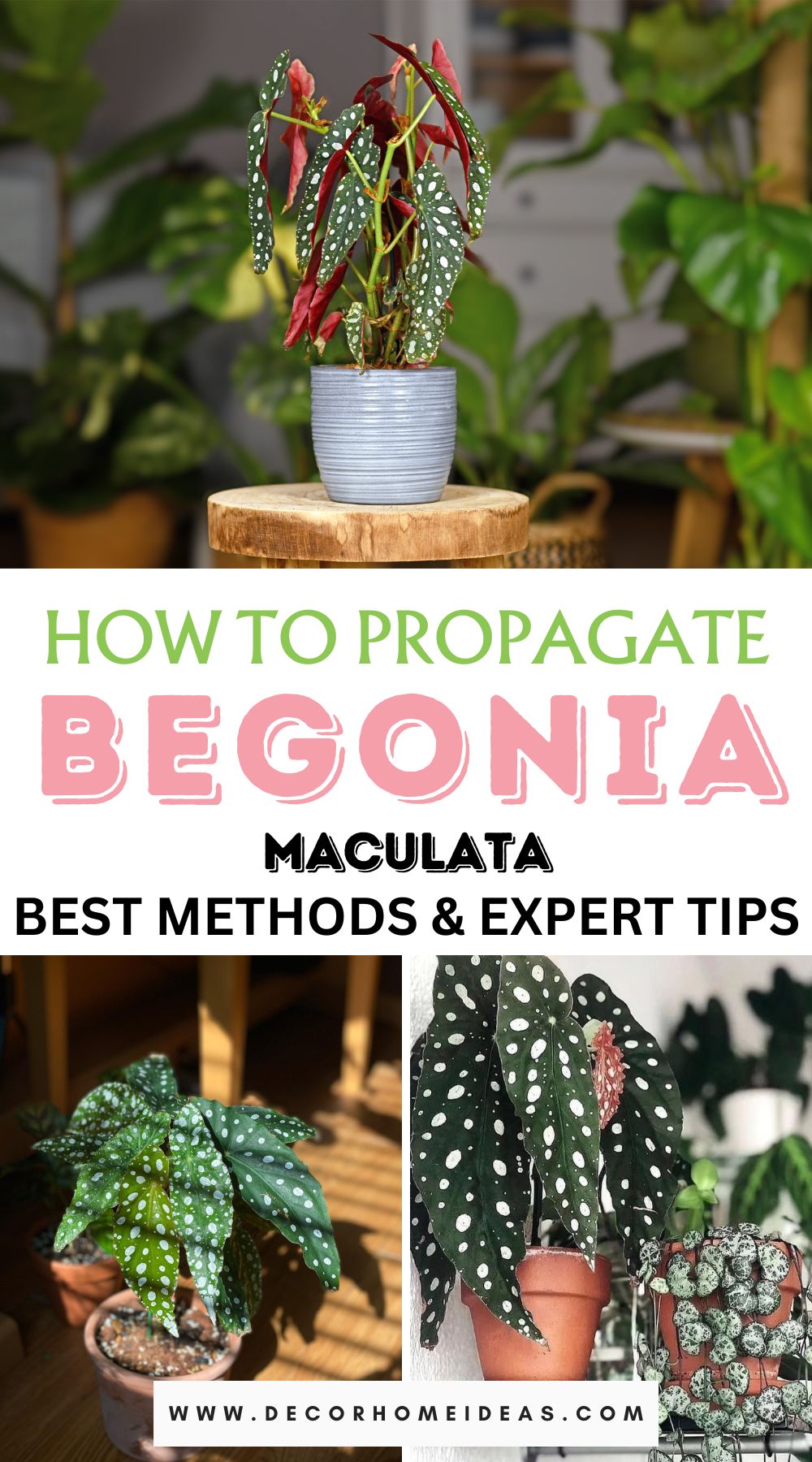
Wrapping Up
If you don’t propagate this plant for its unique look, you have to propagate it for its fascinating polka dot leaves, olive-green leaves, and snow-white flowers!
Ensure you follow the correct care guide for the plant if you want your polka dot begonias to thrive.
Growing the begonia maculata is one of the easiest things you can do. Besides being easy to propagate, this plant can also be easy to care for, and it’ll surely arouse interest among your guests.

